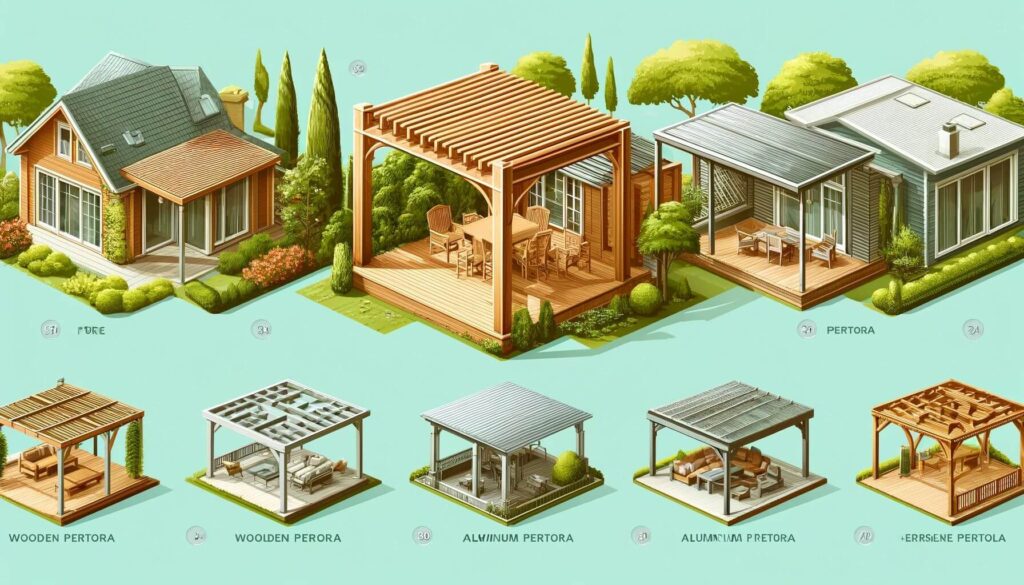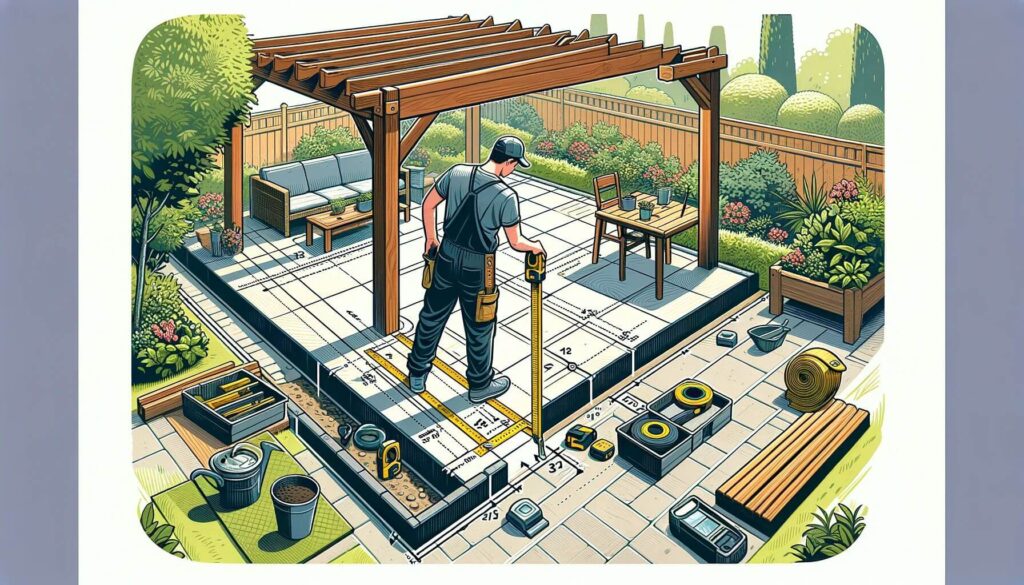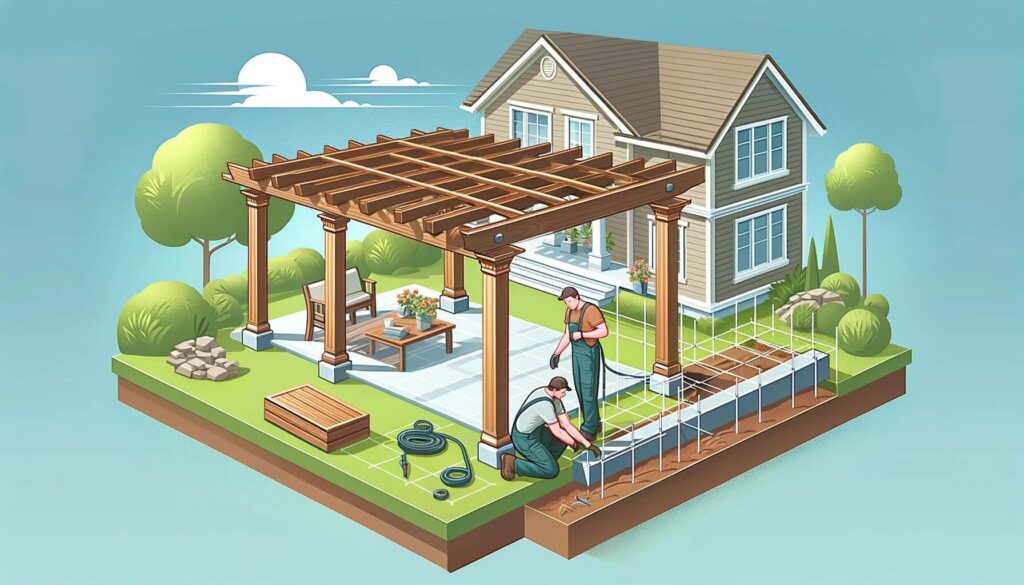A diy pergola kit can transform your outdoor space, adding beauty and function. These structures offer shade and structure, enhancing your outdoor living experience. DIY pergola kits bring this transformation to your doorstep with ease. They offer customization options to suit any taste and space.
1. Understanding Different Types of Pergolas Kit

Choosing the right pergola involves understanding the various types available. Here, we explore materials and designs that cater to different needs and preferences.
1.1 Material Choices for DIY Pergola Kit
Wood: Wood pergolas are popular for their natural beauty. They require regular maintenance but offer a traditional look that many homeowners love. The cost can vary based on the type of wood.
Aluminum: This material is known for its durability and minimal maintenance. Aluminum pergolas come in various styles and are cost-effective for the long-term. They withstand weather elements well.
New Materials: Composite and vinyl are modern alternatives. These materials resist decay, pests, and weathering better than traditional wood. They are ideal for those seeking durability with minimal upkeep.
1.2 Design Variations
Roof Options: Choose from solid roofs for full shade, slatted designs for partial sunlight, or retractable roofs for versatility.
Freestanding vs. Attached: A freestanding pergola offers flexibility in placement. An attached pergola extends your living space and can be anchored to your home.
Special Features: Enhance your pergola with trellises for climbing plants or integrate lighting for evening use.
2. Measuring and Preparing Your Space

Proper measurement and site preparation are crucial for installing your pergola. This ensures the structure fits perfectly and remains secure.
2.1 Measuring Techniques
First, measure the area where you plan to install the pergola. Start by marking the perimeter. Then, check the manufacturer’s specifications for the pergola’s dimensions. Focus on the maximum width and height to ensure it fits within your marked area.
2.2 Site Preparation
Before installation, clear the site of debris and obstacles. For uneven ground, level the area or consider using adjustable supports. This preparation prevents installation issues and ensures stability.
3. Compliance with Local Building Codes for DIY Pergola Kit

Ensuring your pergola project adheres to local building codes is essential. This avoids legal issues and ensures safety.
3.1 Understanding Zoning Laws
Zoning laws can vary significantly. Typically, they govern structure height, distance from property lines, and size. To find specifics for your area, visit your local city or county website. They often provide detailed zoning information. Alternatively, you can contact your local planning department directly.
3.2 Permit Requirements
Not all pergola installations require a permit, but many do, especially if the structure is large or attached to your home. Permits ensure your pergola is safe and structurally sound. Costs for permits vary but expect to spend a few hundred dollars. The process might involve submitting plans and having inspections. Check with your local building authority for detailed procedures.
Adhering to these codes and understanding the permitting process will ensure your pergola project is successful and compliant.
4. Installation Insights

Proper installation is key to ensuring your pergola is stable and durable. Here we discuss setting up the foundation and attaching the structure to other buildings.
4.1 Foundations and Footings
The foundation of your pergola is critical for its stability. There are several types of footings you might consider:
- Concrete footings are ideal for permanent, sturdy support, especially for larger pergolas.
- Ground spikes are suited for smaller, lighter structures and are easier to install.
For installation, you’ll need tools like a post-hole digger, level, and concrete mix. First, mark the footing locations according to your pergola’s dimensions. Then, dig the holes, ensuring they are deep enough for your climate’s frost line if using concrete.
4.2 Attaching to Other Structures
Attaching a pergola to your house can extend your living space. Ensure the connection points are structurally sound:
- Check the load-bearing capacity of the wall or structure you are attaching to.
- Use the right hardware: Brackets, bolts, and screws should be weather-resistant and strong enough for the weight and size of your pergola.
Install a ledger board along the house for a secure attachment point. Seal all connections to prevent water damage.
5. Weatherproofing and Maintenance of DIY Pergola Kit

Proper weatherproofing and regular maintenance will extend the life of your pergola and keep it looking great.
5.1 Making Your Pergola Weather-Resistant
To protect your pergola from the elements:
- Wind Resistance: Secure your pergola with heavy-duty anchors and choose designs with less wind resistance, like those with slatted roofs.
- Storm Protection: For areas prone to severe weather, consider retractable canopies that can be removed during storms and sturdy materials that withstand high winds.
Apply weather-resistant finishes to wood pergolas and regularly check for loose fittings.
5.2 Maintenance Tips
Maintenance varies by material:
- Wood: Annually clean and apply a new coat of sealant or paint to prevent rot and fading.
- Aluminum and Vinyl: These require less upkeep but periodically check for joint stability and clean with mild soap and water to keep them looking new.
Seasonally adjust your maintenance tasks. After winter, check for structural damage, and before summer, ensure your pergola is ready to provide shade and comfort.
6. Expert Advice and Real-Life Examples
Landscape architects and experienced DIY enthusiasts offer valuable insights:
- Planning is Key: Spend ample time in the planning phase to avoid common pitfalls.
- Choose Adaptable Designs: Flexible designs allow for adjustments as your landscape or usage needs evolve.
- Safety First: Always prioritize structural integrity and safety during installation, especially when attaching to existing structures.
The Right Pergola Kit for You
Choosing and installing the right pergola can significantly enhance your outdoor living space. Consider the type, materials, and design that best fit your lifestyle and environment. With proper planning and maintenance, your pergola will be a beautiful and functional addition to your home for years to come. Embrace the process and enjoy the transformation of your outdoor space.
7. FAQ on DIY Pergola Kit
Q: How do I choose the right size pergola for my space?
A: Measure your space and ensure there is enough room for installation and accessibility around the pergola.
Q: What type of maintenance does a pergola require?
A: Wood pergolas need annual sealing or painting, while metal and vinyl structures generally require less frequent care.
Q: How do I make my pergola more resistant to wind and weather?
A: Use sturdy materials and secure anchoring systems. Consider retractable covers for severe weather conditions.


Leave a Reply